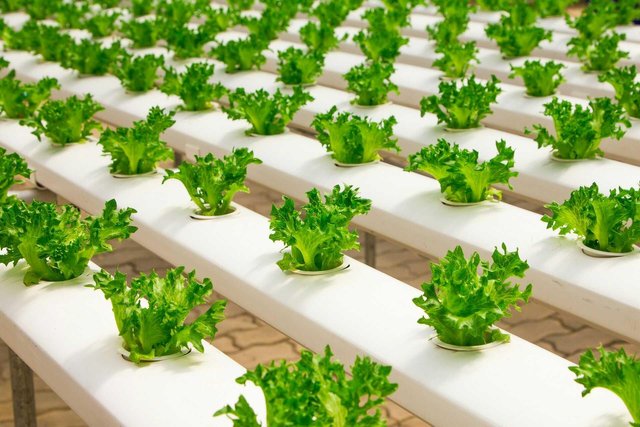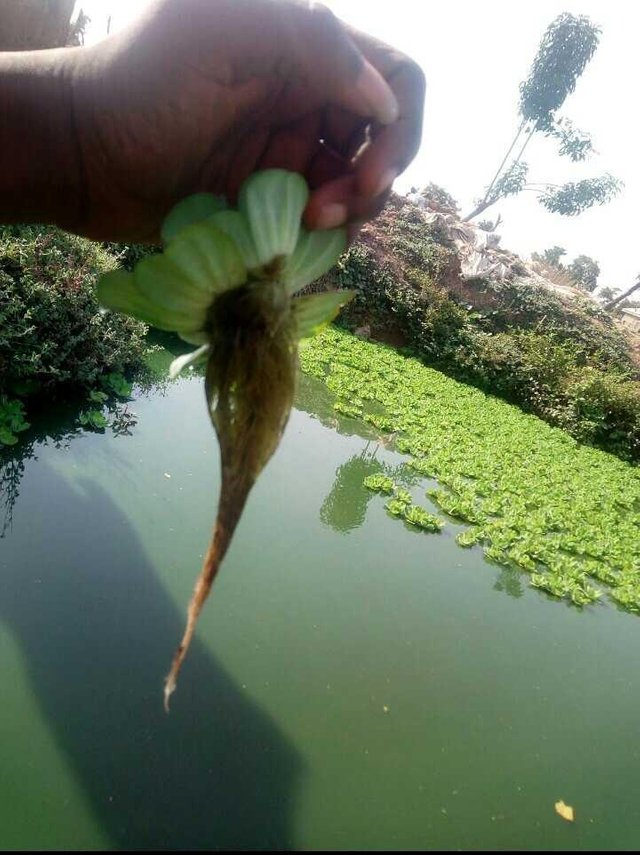What if there is no more land for farming, can we find an alternative? Let's say Hydroponics.
Do you know that today, there are 7.6 billion people on earth? A number that the United Nations have projected will reach 9.8 billion in 2050, and 11.2 billion in 2100. There are so many people on earth right now and the population is still on the increase. This makes me wonder if there will be enough resources to sustain this increase in population.
My agricultural science teacher in secondary school told us that agriculture as the cultivation of land and rearing of animals and crops for man use. My teacher believes that as long as there are farmers in the world, the world will never go hungry. But the big question is: What if there are farmers but there are no more lands for them to cultivate?
Industrialization and urbanization are competing with the remaining land available for agriculture. In some part of the world, insurgency and political instability have made farming to become impracticable. And most of the remaining lands are either unproductive or not fertile. These are the reasons that justify my question that: What if there is no more land for farming, can we find an alternative?
Let's say Hydroponic...
What is Hydroponic?
 CC0 Creative Commons: [pixabay](https://pixabay.com/en/greenhouse-organic-farming-2139526/)
CC0 Creative Commons: [pixabay](https://pixabay.com/en/greenhouse-organic-farming-2139526/)More notes on hydroponic...
There is an increase in population and gradual reduction in the available land for agriculture. So discussing hydroponics as an alternative to conventional farming is not out of place.
 Image of water lettuce by me showing its free floating root
Image of water lettuce by me showing its free floating rootWhen we are hungry we look for food to eat. When plants need food, they also make their own food through the process known as photosynthesis. Photosynthesis is the process whereby plants produce their food using energy from the sun to make carbohydrate from carbon dioxide from the atmosphere and water absorbed by the root. Oxygen is produced as a byproduct of the reaction.
Photosynthesis equation:

creative commons
Hydroponic plants are therefore grown in a nutrient solution which contains the required nutrient in the right proportion for their growth. The root of the plants is either submerged totally in the solution or exposed periodically the nutrients. Hydroponic can be practiced indoor too but you will have to purchase an artificial light to enable photosynthesis. Another function of soil to plant is the mechanical support it offers. Therefore, some materials are used to produce the same result in hydroponics. Examples are rice husk, vermiculite, gravel, wood fiber, rock wool, etc.
Different types of hydroponic systems
It is a flood and drain system. The plant tray is set above the nutrient solution reservoir. The nutrient solution is then pumped into the plant tray with a pumping machine. There is a drainage outlet which only permits water to a certain height. Once the nutrient solution reaches that hight, it drains back into the reservoir through the action of gravity.

In the nutrient film technique, the nutrient solution is in a constant motion. The nutrient is pumped from the reservoir and it flows freely along the roots of the plant. The system is designed to be sloppy so that the water drains back into the reservoir where it is being pumped to the rearing tanks again.
This system, unlike the other hydroponic system, doesn't have its plant submerged in water. Instead, the root is exposed periodically to a nutrient spray. The nutrient solution is delivered via the nozzle as a fine particle of mist that is rich in nutrient.
Here, the plants are submerged totally in the nutrient solution. The nutrients are changed occasionally when the concentration drops. The solution is gently aerated to ensure that oxygen is supplied to the roots of the plants.
It is similar to the deep water culture but in this case, the nutrient solution is aerated in a separate reservoir different from the plant tray. The nutrient is supplied and drained back immediately keeping it in a constant recirculating system.
This works more like a kerosene stove where the wick is left in the fuel. This is a simple method and it works based on the principle of capillary action. The wick is introduced placed in the nutrient solution reservoir and introduced into the growing medium.
Other factors that can influence the success of a hydroponic system.
Always remember that when plants are grown hydroponically, they don't get access to nutrients and water naturally like plants in soil. So, a good understanding of some factors will be imperative to the success of this system.
There are seventeen important recognized plant nutrients. They are nitrogen, phosphorus, potassium, calcium, sulfur, magnesium, carbon, oxygen, hydrogen, iron, boron, chlorine, manganese, zinc, copper, molybdenum, and nickel. [ref]
- pH of nutrient solution: pH is a parameter that measures the degree to which the solution is acidic or alkaline. It has a range of 0 - 14. When the value is less, it means the solution is acidic and when it is high, it indicates that it is alkaline. pH influences the availability of nutrients in the form that is useful to the plant. Getting a pH kit will be important for anyone who wants to practice hydroponics.
- Electrical conductivity of the nutrient solution: electrical conductivity is simply the ability of a solution to conduct electricity. As simple as it can be said, it is as important as pH and electrical conductivity meter is another important tool for any hydroponic farmer. Pure water has no electric conductivity. But once salts dissolve in water and dissociate into ions, the conductivity increases. Likewise, in hydroponic, electrical conductivity is used to determine the strength of the nutrient ion available in nutrient solution.
- Composition of nutrients in nutrient solution: every plant has its own different nutrient requirement. Therefore, for a successful hydroponic system, you must understand the plant you want to grow and its nutrient requirement.
- Oxygenation of nutrients: as I've early said, a plant needs oxygen to grow. The root must be well supplied with oxygen through the aeration of the nutrient solution.
The good and the bad...?
The first on my list for the advantages is the fact that you don't need soil to grow your plants. You may not see much advantage to it but it will definitely save some space because it can be located anywhere. It also saves water. On land, most of the water supplied as irrigation will still not be made available for the plant to use. Hydroponic make use of wastewater from fish as nutrient solutions in a system known as Aquaponics. Nutrients are utilized better in this system because the plants are exposed directly to the nutrients. Therefore, this calls for a better growth rate and an increase in yield. The soil naturally harbors some pests and disease which can affect the plants but with this system, this is totally eliminated. When you think of this advantages, you will realize that you will actually spend less on insecticides and also minimize its usage.
People always say that there is nothing that has advantages that is not without its own disadvantages. I think that is true for this system too. Growing plants without soil may be an advantage but this also means that one must understand the nutrient requirement for the particular plant to grow. Not everyone can do this and when the nutrient requirement of a particular plant has been established, some people still lack the technical know-how of how to run the system. The initial cost of setting up the system might be a bit expensive especially if you intend doing it for commercial purposes other than a hubby. The system requires that there is a regular supply of electricity and water. This is not readily available at all places, take for instance Nigeria. A breakdown in power and water supply can be catastrophic to the system.
what type of plants should I grow hydroponically?
From all I've discussed so far, I can say, all crops can be theoretically planted using hydroponics. Remember I said that the conditions needed for a plant to grow are: availability of water, nutrient, carbon dioxide, oxygen and light for photosynthesis. This means that if these factors are met, it is possible to grow any plant. Nevertheless, it is obvious that some types of plants will do well in hydroponics than others. Some common plants grown hydroponically include tomatoes, potato, strawberries, lettuce, pepper, cucumber, etc. Tree plants and some other species may not be a good candidate to consider.
Should you practice hydroponics?
No doubt, most of the scientific technology we have today models are just modifications to Mother Nature's own designs. Therefore, there have always been debates whether modifications by science can be compared to what is originally produced by Mother Nature. Another of this debate is whether hydroponic-grown plants can be compared to the soil-grown plants. In an experiment carried out to compare Soil-Grown Strawberries and hydroponic-grown strawberries, it was reported that 70% preferred the hydroponically grown strawberry. However, further research might be needed to verify their findings. [ref]
Now that you have an understanding of hydroponics and you're probably thinking, should I do this or not? You have some advantages and disadvantages. Do your own research and if you find anyone doing it around you, that might be a good place to start.
Thank you for reading my blog!
Reference:
- Advantages and disadvantages of Hydroponics
- Comparison between Hydroponic and Soil-Grown Strawberries: Sensory Attributes and Correlations with Nutrient Content
- https://en.m.wikipedia.org/wiki/Hydroponics
- Hydroponics For Beginners - The Definitive Guide
- Nutrient Solutions for Hydroponic Systems [pdf]
The estimated population in 2100 is mind-boggling. I guess we will then have to reclaim some part of the oceans and rivers to make a home for the teeming populace.
It might be necessary to do that with time. But there will still enough space for the population. My greatest fear though is the great deforestation that may happen when these teeming population arrives.
Congratulations! Your post has been selected as a daily Steemit truffle! It is listed on rank 1 of all contributions awarded today. You can find the TOP DAILY TRUFFLE PICKS HERE.
I upvoted your contribution because to my mind your post is at least 21 SBD worth and should receive 194 votes. It's now up to the lovely Steemit community to make this come true.
I am
TrufflePig, an Artificial Intelligence Bot that helps minnows and content curators using Machine Learning. If you are curious how I select content, you can find an explanation here!Have a nice day and sincerely yours,

TrufflePigThis post has been voted on by the steemstem curation team and voting trail.
There is more to SteemSTEM than just writing posts, check here for some more tips on being a community member. You can also join our discord here to get to know the rest of the community!
Hi @mr-aaron!
Your post was upvoted by utopian.io in cooperation with steemstem - supporting knowledge, innovation and technological advancement on the Steem Blockchain.
Contribute to Open Source with utopian.io
Learn how to contribute on our website and join the new open source economy.
Want to chat? Join the Utopian Community on Discord https://discord.gg/h52nFrV